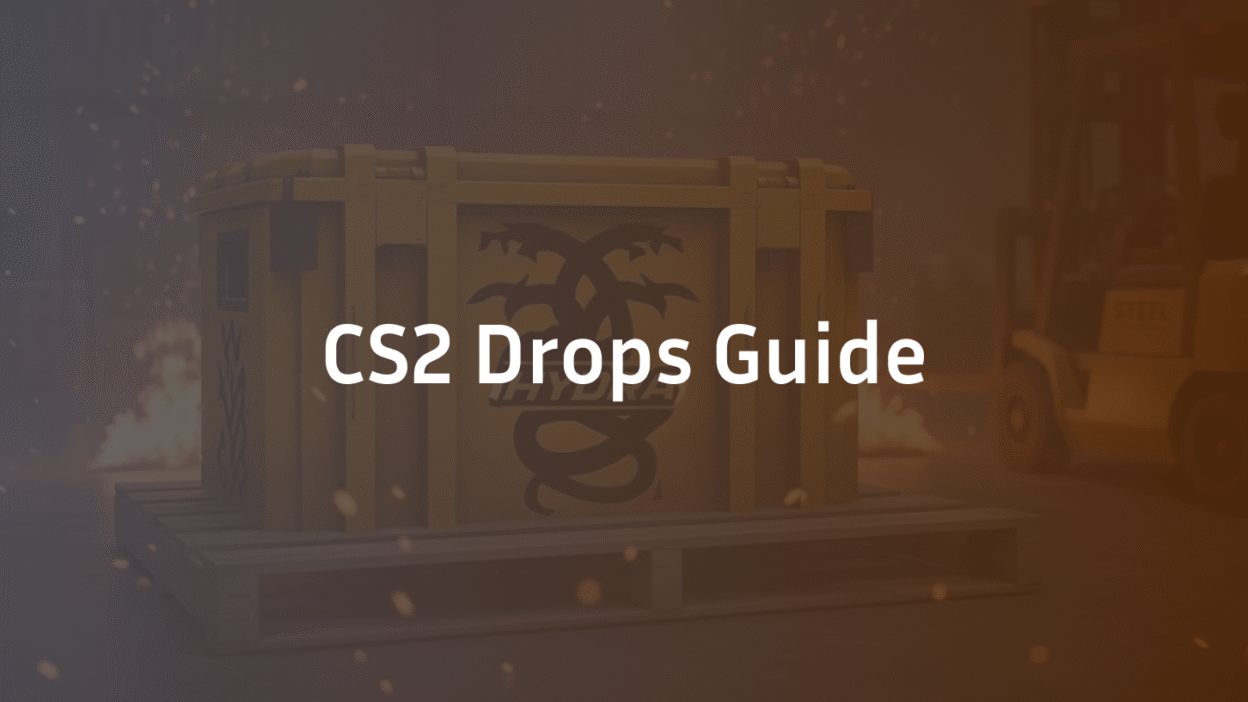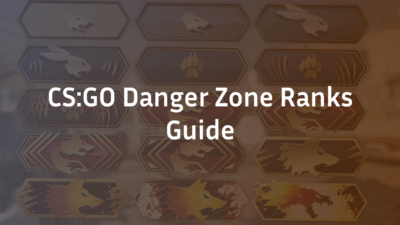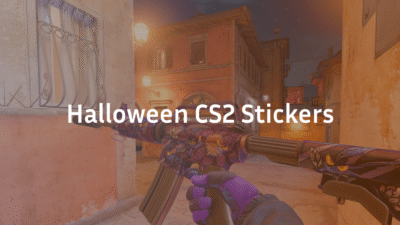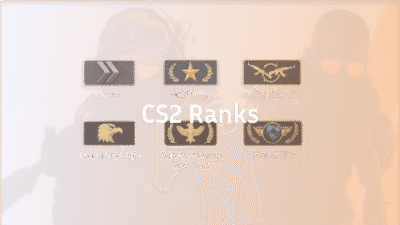How the CS2 Drop System Really Works
Understanding CS2’s drop system is the first step toward maximizing your free rewards. Unlike random loot systems in other games, CS2 uses a predictable, weekly-based model that rewards consistent play. The system is built on two core pillars: a weekly reset timer and your in-game experience (XP) earnings.
At its heart, the system is designed to provide a steady stream of free items while encouraging regular engagement. Whether you’re a casual player or a dedicated grinder, you’re guaranteed at least one drop per week, with the potential for more based on your activity.
The Weekly Reset: Your Key to Free Loot
The cornerstone of the CS2 drop system is the weekly reset. Every Tuesday, at approximately 6:00 PM UTC, the system refreshes for all players. This reset does two things:
- It makes you eligible for your first weekly drop.
- It clears your progress toward the next one.
You do not need to log in at this exact time to claim your reward. Instead, the next time you play and earn any amount of XP after the reset, you will receive a drop. This drop can be one of two things: a weapon case or a skin from the current collection pool. The item is granted automatically at the end of a match.
It’s crucial to distinguish this from the separate CS2 Weekly Care Package Reset, which refreshes your available bonus XP. While both happen weekly, the care package is about earning experience, while the drop is about receiving a tangible item.
The Role of XP and Your Profile Rank
While your first weekly drop is guaranteed with minimal effort, your Profile Rank is the engine that can drive additional rewards. Here’s how they connect:
- Guaranteed Drop: Earn any amount of XP after the weekly reset to receive your first item.
- Level-Up Drops: Every time you level up your Profile Rank, you receive an additional drop. This is the key mechanism for earning more than one item per week.
This means that if you play enough to level up your profile three times in a week, you will receive four total drops: one from the weekly reset and three from leveling up. This makes efficient XP farming directly tied to your potential loot, which is why understanding your CS2 Ranks & Premier Rating and the associated XP system is crucial for serious farmers.
In essence, the system is a loop: play the game, earn XP, get drops, and reset. Now that you understand the mechanics, let’s examine what exactly you can get from these drops.
What Can You Actually Get? The CS2 Drop Pool Explained
Once you understand the timing of CS2 drops, the next logical question is: what’s inside? The CS2 drop pool is a curated selection of items that Valve periodically updates. There are two primary types of drops you can receive, each with its own purpose and potential value.
Knowing what’s available helps set realistic expectations. You’re not just getting a random skin; you’re receiving an item from a specific, known group of possibilities. This knowledge is power when assessing the potential value of your weekly efforts.
Weapon Cases: A Chance at High-Tier Skins
Weapon cases are the most common type of drop and the backbone of CS2’s economy. When you receive a case, you get a container that requires a separate Key to open. Inside each case is a collection of skins with varying rarities, including ultra-rare Special and Knife finishes.
- What They Contain: A predetermined set of weapon skins from a specific collection (e.g., Dreams & Nightmares Case, Recoil Case).
- The Catch: Opening a case requires a purchased key, which makes it a gamble. The skin you unbox is random, and the odds of getting a high-value item are very low.
- Current Examples: The active case pool changes, but typically includes 5-7 recent cases. As of 2025, this includes cases like the Kilowatt Case and the CS2: Workshop Case.
While getting a case drop is exciting, remember it’s just the first step. You’ll need to decide whether to sell it on the market, trade it, or take the risk of opening it. Understanding the CS2 Float Value of the skins inside can help you assess that risk.
Collections: The Source of Specific Play-Skins
Collection drops provide you with a ready-to-use weapon skin, no key required. These are items from specific map-themed collections like the Dust 2 Collection or the Inferno Collection. These skins can be equipped immediately and are your direct source of free play-skins.
- What They Contain: Specific, non-case skins that are often more modest in design but can include rare and valuable finishes.
- The Advantage: No key is needed. The skin is yours to use or sell the moment it drops.
- Rarity Tiers: Drops from collections follow a rarity distribution. You’re most likely to get a Consumer Grade (Light Blue) or Industrial Grade (Blue) skin, with Mil-Spec (Purple) and higher being progressively rarer.
These collection items can sometimes be surprisingly valuable, especially if they come from older, discontinued collections or have a desirable pattern. Now that you know what you can get, let’s break down what these drops are actually worth in the real world.
Are CS2 Drops Worth It? A Realistic Value Analysis
Let’s address the million-dollar question: are CS2 drops actually worth your time? The answer isn’t a simple yes or no—it’s a spectrum of potential value. For most players, drops provide a steady trickle of minor market value and personal customization. For a lucky few, they can be a genuine source of significant profit.
The true value of your drops depends on two key factors: the brutal mathematics of probability and the fluctuating trends of the Steam Community Market. Setting realistic expectations is crucial to avoiding disappointment and recognizing a truly rare win when it happens.
The Shocking Odds: From Common Graffiti to Rare Knives
The distribution of items is heavily weighted toward common, low-value goods. Understanding the odds is the first step in managing expectations.
- Weapon Cases: Most common cases typically have a market value of $0.03 to $0.25. Their value comes from volume or the rare chance that a new case enters the pool and demand is high.
- Collection Skins: The vast majority of collection drops are Consumer Grade (white) or Industrial Grade (light blue) skins. These often have a market value of $0.03 to $0.15.
- The Rare Hits: Getting a Mil-Spec (purple) or higher skin from a collection drop is uncommon. The chance of unboxing a knife from a case is astronomically low, often cited at around 0.25% or less.
In short, you should expect most of your drops to be worth less than a quarter. They are best viewed as a small bonus that, over time, can add up to enough Steam credit for a better skin or another game.
How Collection Age and Rarity Affect Value
Not all drops are created equal. The single biggest factor influencing a drop’s value, besides its inherent rarity, is its source.
- Current Pool Collections: Items from actively-dropping collections (e.g., the current Dust 2 or Inferno collections) are common and thus have very low value due to high supply.
- Discontinued Collections: Skins from collections that are no longer in the drop pool (like some older Operation collections) become scarce. As supply dwindles and demand remains, their value can appreciate significantly over time. A skin that was once worth $0.10 can become worth $10 or more.
This is why checking the market for every drop is a good habit. That seemingly uninteresting light blue skin might be from a retired collection, making it your most valuable drop of the year. Understanding this ecosystem is key, and using a CS2 Trade Up Calculator can help you strategize how to combine those low-value drops into something more desirable.
While luck plays a role, you can actively increase your number of lottery tickets. Next, we’ll explore advanced strategies to maximize your drop opportunities every single week.
Advanced Strategies for Optimizing Your Weekly Drops
While the CS2 drop system has fixed rules, you aren’t just a passive participant. By employing smart strategies, you can consistently maximize the number of drops you receive each week. This isn’t about cheating the system—it’s about playing it efficiently to ensure you’re always progressing toward your next reward.
The core strategy revolves around one principle: maximizing your XP gain per hour played. Since leveling up your Profile Rank grants extra drops, the faster you earn XP, the more items you’ll receive. Let’s break down the most effective ways to do this.
Farming XP Efficiently: Best Game Modes for Drops
Not all game modes are created equal when it comes to earning XP for your drops. Your goal is to find the mode that offers the best balance of high XP potential and time efficiency.
- Premier & Competitive Mode: These are typically the best sources of consistent, high XP rewards. Winning a match provides a significant XP bonus, and the longer match duration means more round wins and potential MVPs, which all contribute to your total.
- Deathmatch & Casual: While individual matches yield less XP, they are much faster. You can accumulate XP quickly by playing multiple short games, especially if you perform well. This is a solid option for shorter play sessions.
- Wingman: A great middle-ground option. Matches are shorter than full Competitive games, but the XP reward is still respectable and winning is crucial for a good payout.
The single most important tip is to play during your weekly bonus period. The first few wins of the week in any official game mode provide a massive XP multiplier. Prioritize winning these matches to rapidly fill your weekly XP bar and level up your profile faster. For a deeper dive into the most effective ways to play, our CS2 Deathmatch: Complete Guide to Modes, Benefits & Strategies offers valuable insights.
The Prime Status Advantage
This is non-negotiable for anyone serious about CS2 drops. A Prime Status account is the gatekeeper to the complete drop system.
- Access to the Full System: Only Prime accounts are eligible to receive all types of drops, including weapon cases and valuable collection skins.
- Leveling Requirements: You must have Prime Status and reach Profile Level 10 to access the full suite of official matchmaking, which is the most reliable way to earn high amounts of XP.
- A Trusted Environment: Prime servers generally have fewer cheaters, leading to a better and more consistent gameplay experience, which indirectly helps your ability to win matches and earn XP.
If you’re playing without Prime, you are severely limiting your drop potential. It is the foundational investment for any player looking to build an inventory through gameplay.
By combining efficient game mode selection with a Prime account, you systematically increase your drop rate. But what happens when this system breaks? Let’s troubleshoot the common reasons your drops might not be appearing.
Troubleshooting: Why You’re Not Getting Your Drops
It’s frustrating to play for hours and receive nothing. If your CS2 drops aren’t appearing, the cause is usually one of a few common issues. Unlike some complex in-game problems, drop-related issues often have straightforward explanations and solutions.
Before assuming there’s a glitch, it’s best to systematically check the most likely culprits. This logical approach will save you time and get you back to earning rewards quickly. Let’s walk through the diagnostic steps.
A Step-by-Step Diagnostic Checklist
Follow this checklist to identify and solve the problem:
- Check the Calendar and Clock: Is it currently Tuesday? Remember, the drop system resets weekly on Tuesday at approximately 6:00 PM UTC. If it’s Monday and you’ve already received your drop for the week, you won’t get another until after the reset.
- Verify Your Prime Status: This is the most common barrier. Ensure your account has Prime Status. You can check this in the CS2 main menu. Without it, your drop access is severely restricted or non-existent.
- Confirm You’ve Earned XP: Have you actually earned any XP since the last reset? Simply idling in a menu or a community server that doesn’t grant XP won’t count. You must complete an official, XP-granting game mode like Casual, Deathmatch, or Competitive.
- Have You Already Received Your Drop?: It’s easy to miss the notification. Check your inventory history in Steam or sort your CS2 inventory by “Most Recent” to see if the drop was granted and you simply didn’t notice.
- Check for Broader Game Issues: Occasionally, server-side issues at Valve can delay drops for all players. Check community forums or status pages to see if others are reporting similar problems. If it’s a widespread issue, you can only wait.
If you’ve gone through this list and everything seems correct, the issue might be more nuanced. Sometimes, verifying the integrity of your game files through Steam can resolve underlying issues that affect functionality. For a more comprehensive guide on fixing various CS2 problems, our CS2 Crashing? The Definitive 2025 Fix Guide covers steps that can also resolve other quirky behaviors.
Most drop issues are solved by simply waiting for the weekly reset or confirming Prime Status. Now that we’ve covered the potential problems, let’s put everything into perspective with a clear-eyed comparison of free drops versus paid openings.
Free Drops vs. Buying Cases: A Data-Driven Comparison
With an understanding of both the drop system and the market, we can now tackle a fundamental question: is it better to rely on free drops or to spend money on opening cases? This is a classic risk-versus-reward scenario, and the data reveals a clear winner for the financially savvy player.
Making an informed choice requires looking at the cold, hard numbers of expected value. While opening a purchased case feels more exciting, the mathematics of probability heavily favors one approach over the other for the vast majority of players.
The Expected Value Breakdown
Let’s compare the two methods using a simple financial lens:
| Aspect | Free Drops | Buying Cases |
|---|---|---|
| Initial Cost | $0.00 | ~$2.50 (case + key) |
| Risk Level | Zero financial risk | High financial risk |
| Guaranteed Return | Yes – always receive an item | No – must gamble for contents |
| Average Item Value | $0.05 – $0.25 | Varies wildly (mostly <$0.50) |
| Expected Value | Positive (free items) | Negative (house always wins) |
| Best For | Building inventory slowly, budget players | Thrill-seekers, those who enjoy gambling |
| Long-term Outcome | Steady accumulation of Steam credit | Almost guaranteed net loss |
| Psychological Impact | Low excitement, consistent rewards | High excitement, frequent disappointment |
| Time Investment | Requires regular gameplay | Instant (if you have money) |
| Smart Strategy | Sell valuable drops, buy desired skins directly | Avoid entirely or set strict budget limits |
The key takeaway is that free drops are a slow-but-steady form of accumulation, while buying cases is a form of entertainment-based gambling. You should only ever spend money on keys if you view that cost as payment for the thrill of the gamble, not as an investment.
A Smarter Hybrid Approach
For players who want to engage with the case-opening aspect without hemorrhaging money, a hybrid strategy is most effective:
- Sell Your Free Case Drops: When you get a new, desirable case as a drop, sell it on the market while its price is high.
- Use the Proceeds: Take the Steam credit you earned from selling free drops and use it to fund other game purchases or buy specific, affordable skins you want from the market.
This approach leverages the free drop system to subsidize your CS2 experience. It’s far more effective than falling into the trap of using your own money to chase rare items. Understanding the CS2 Weapon Stats can also help you make smarter decisions about which skins are actually worth buying for your preferred weapons.
The system isn’t just a random reward mechanism; it’s a carefully designed ecosystem. To fully understand your place in it, let’s explore the psychology behind the drops and what the future might hold.
The Psychology and Future of CS2 Drops
Beyond the mechanics and economics, the CS2 drop system represents a sophisticated engagement engine designed to keep players invested in the game. Understanding this psychological dimension helps explain why the system is structured the way it is—and what might come next.
Valve has masterfully created a variable reward schedule, one of the most powerful engagement tools in game design. The weekly reset creates a habit-forming cycle, while the rare chance of a valuable drop provides the “slot machine” effect that keeps players coming back. This isn’t accidental; it’s carefully crafted to maintain CS2’s player base and economy.
Why the System Works So Well
Several psychological principles are at play:
- The Sunk Cost Fallacy: Players think, “I’ve already invested this much time, I might as well play until I get my drop.”
- Variable Ratio Reinforcement: The uncertainty of what you’ll get (a $0.03 skin vs. a $50 case) makes the reward more compelling than if it were predictable.
- Fear of Missing Out (FOMO): The weekly reset creates urgency—if you don’t play, you lose your chance for that week’s drop.
This system also serves as a gentle introduction to CS2’s skin economy. Your first free drop is your entry point into a marketplace where players eventually become buyers and traders. For those looking to dive deeper into building their collection, understanding the Most Expensive CS2 Skins provides context for what makes certain items so desirable.
What’s Next for CS2 Drops?
Looking ahead, we can anticipate several potential developments:
- Collection Rotations: Valve will likely continue rotating which collections are in the active drop pool, potentially reintroducing older collections to create market excitement.
- Operation Integration: Future operations will almost certainly include new, exclusive collections that are only available during the operation period.
- Rarity Adjustments: As the game evolves, we may see adjustments to drop rates or the introduction of new rarity tiers to keep the economy fresh.
The system isn’t static—it’s designed to evolve alongside the game itself. Now that we’ve covered everything from basic mechanics to future speculation, let’s address the most common questions players have about CS2 drops.
Frequently Asked Questions (FAQ)
How often do you get drops in CS2?
You receive at least one guaranteed drop per week after the Tuesday reset. Beyond that, you can earn additional drops each time you level up your Profile Rank, with no hard weekly limit on these level-up drops.
What time do CS2 drops reset?
The CS2 drop system resets every Tuesday at approximately 6:00 PM UTC. This is consistent across all regions and doesn’t depend on your location.
How many drops per week can you get in CS2?
There’s no fixed maximum. You get one guaranteed drop after the weekly reset, plus one additional drop for every Profile Rank level you gain. Active players can realistically earn 2-4 drops per week through consistent play.
Do you need Prime to get drops in CS2?
Yes, Prime Status is required to receive the full range of CS2 drops, including weapon cases and collection skins. Non-Prime accounts have severely restricted or no access to the drop system.
What is the best drop you can get in CS2?
The “best” drop is subjective, but the most valuable would be:
- A new weapon case immediately after it’s added to the drop pool
- A rare skin from a discontinued collection (like a pink or red from an old Operation)
- StatTrak™ versions of any moderately valuable skin
Can you get knife drops in CS2?
No, you cannot receive knives as direct drops. However, you can get weapon cases that contain knives, but opening these requires purchasing a key and has extremely low odds (~0.25%).
Why am I not getting my weekly drops in CS2?
Common reasons include:
- It’s not yet Tuesday reset time
- You don’t have Prime Status
- You haven’t earned any XP since the reset
- You already received your drop but missed the notification
- Temporary server issues at Valve
What cases can you get from drops in CS2?
The active case pool rotates periodically. As of 2025, it typically includes 5-7 recent cases like the Kilowatt Case and CS2: Workshop Case, plus some older recurring cases.
Are CS2 drops worth anything?
Most drops have minimal value ($0.03-$0.25), but they can occasionally be worth significantly more if you get a rare skin from a discontinued collection or a new, desirable case.
How does XP affect CS2 drops?
XP is crucial for maximizing drops. While your first weekly drop requires minimal XP, leveling up your Profile Rank (which requires accumulating XP) grants additional drops. More XP = more level-ups = more drops.
What’s the difference between a case drop and a skin drop?
Case drops require a purchased key to open and contain random skins, while skin drops from collections are immediately usable without any additional cost.
Can you get old operation skins from drops?
Generally, no. Operation collections are usually removed from the drop pool when the operation ends, making those skins more scarce and valuable over time.
Do CS2 drops expire?
No, once a drop appears in your inventory, it’s yours permanently until you sell, trade, or use it.
What is the rarest drop in CS2?
The rarest direct drops are high-tier skins (Classified or Covert) from active collections, with StatTrak™ versions being even rarer. However, no drop is as rare as unboxing a knife.
Is there a way to increase my drop chance in CS2?
You cannot influence which specific items you get, but you can increase the number of drops you receive by maximizing your XP gain through winning matches and playing during your weekly bonus period.
This concludes our comprehensive guide to CS2 drops. We’ve covered everything from the basic mechanics to advanced optimization strategies, value analysis, and future outlook. Remember that while drops won’t make you rich, they provide a steady stream of free content that enhances your CS2 experience. Happy gaming!



